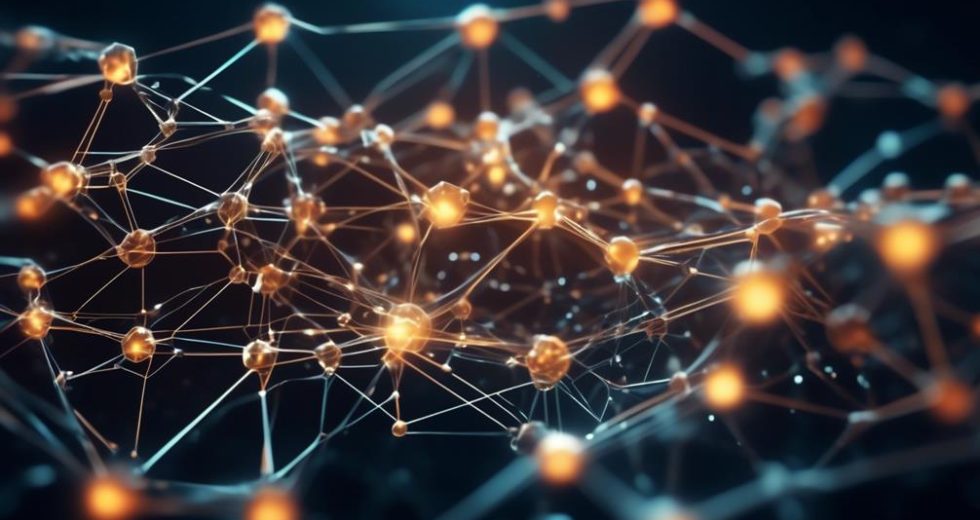Web 3.0, the next frontier of the internet, represents a transformative shift towards a more intelligent and decentralized digital landscape.
From the semantic web's goal of enabling machines to understand online content to the disruptive potential of blockchain technology, Web 3.0 is poised to revolutionize how we interact with and leverage the internet.
By exploring the components that underpin Web 3.0 and delving into real-world examples of its applications, we can gain a deeper understanding of its impact and the exciting opportunities it presents for innovation and advancement.
Key Takeaways
- Web 3.0 introduces intelligence through machine learning and AI, revolutionizing socializing, working, and playing in the metaverse.
- The integration of machine learning and the semantic web leads to more accurate and relevant results, but challenges include high-quality and standardized data.
- Blockchain implementation in web 3.0 offers enhanced security, immutability, and transparency, paving the way for a more user-centric internet.
- Web 3.0 applications provide personalized recommendations, decentralized marketplaces, and tailored content, driving the future of the internet.
Web 3.0 Vs Web 2.0
When comparing Web 3.0 to its predecessor, Web 2.0, significant differences can be observed in terms of functionality, intelligence, and decentralization.
Web 3.0 introduces a new level of intelligence by leveraging technologies such as machine learning and artificial intelligence. This enables the internet to understand and interpret data, providing users with more accurate and personalized search results.
Additionally, Web 3.0 embraces decentralization, eliminating the need for intermediaries and enabling direct peer-to-peer interactions. This has implications for increased privacy, security, and transparency.
Advantages of Web 3.0 include optimized search results and services, as well as the potential for new ways of socializing, working, and playing in the metaverse.
Semantic Web and Machine Learning
The integration of machine learning and the semantic web is revolutionizing the way content is understood and processed on the internet. By combining the power of machine learning algorithms with the structured and labeled data of the semantic web, web 3.0 applications are able to provide more accurate and relevant results to users. However, there are potential challenges in implementing the semantic web and machine learning. These include the need for high-quality and standardized data, as well as the complexity of developing and training machine learning models. Additionally, ethical considerations arise in the use of machine learning in web 3.0 applications. Issues such as bias, privacy, and transparency need to be carefully addressed to ensure fair and responsible use of these technologies.
| Challenges in Implementing Semantic Web and Machine Learning | Ethical Considerations in the use of Machine Learning in Web 3.0 Applications |
|---|---|
| High-quality and standardized data | Bias in algorithms |
| Complexity of developing and training machine learning models | Privacy concerns |
| Integration of different technologies and systems | Transparency and accountability |
Blockchain and Decentralization
The integration of blockchain technology and the concept of decentralization is reshaping the landscape of web 3.0, addressing key challenges and ethical considerations while paving the way for a more secure, transparent, and user-centric internet.
Blockchain implementation in web 3.0 offers numerous advantages, such as enhanced security, immutability, and transparency. By using a decentralized network, blockchain eliminates the need for intermediaries, allowing for direct peer-to-peer transactions and interactions. This not only reduces costs but also increases efficiency and trust.
Additionally, decentralization ensures that power is not concentrated in the hands of a few organizations or individuals, promoting a more democratic and inclusive internet.
With blockchain and decentralization at its core, web 3.0 has the potential to revolutionize various industries and create new opportunities for innovation.
Web 3.0 Applications
Web 3.0 applications encompass a wide range of innovative technologies and platforms that are reshaping the way we interact, transact, and access information on the internet. These applications offer personalized recommendations and explore the exciting possibilities of the metaverse.
Here are three key aspects of Web 3.0 applications:
- Personalized recommendations: Web 3.0 leverages advanced algorithms and user data to provide personalized recommendations for users. This enables tailored content, products, and services that align with individual preferences, enhancing the overall user experience.
- Metaverse possibilities: Web 3.0 opens up new avenues for socializing, working, and playing in the metaverse. It enables immersive virtual environments where users can interact, create, and explore. This has the potential to revolutionize various industries, including gaming, entertainment, and virtual reality.
- Decentralized marketplaces: Web 3.0 applications facilitate decentralized marketplaces, eliminating the need for intermediaries. Users can directly buy and sell goods and services, ensuring transparency, security, and autonomy.
These Web 3.0 applications are driving the future of the internet, offering personalized experiences and unlocking the potential of the metaverse.
Impact and Future of Web 3.0
As Web 3.0 applications continue to reshape the internet landscape, its impact and future possibilities are becoming increasingly significant.
However, the adoption of Web 3.0 technologies may face potential challenges and obstacles. One such challenge is the need for widespread adoption and understanding of these technologies. Educating users and businesses about the benefits and functionalities of Web 3.0 will be crucial for its success.
Additionally, the ethical considerations and implications of Web 3.0 technologies must be carefully examined. Issues such as privacy, security, and the fair distribution of power and wealth in a decentralized system will need to be addressed. Moreover, regulatory frameworks will need to be developed to ensure the responsible and ethical use of these technologies.
Despite these challenges, the future of Web 3.0 holds immense possibilities for innovation, improved user experiences, and the transformation of various industries.
Frequently Asked Questions
How Does Web 3.0 Differ From Previous Versions of the Internet?
Web 3.0 differs from previous versions of the internet by emphasizing intelligence, connectivity, and decentralization. It leverages technologies like machine learning and blockchain to provide personalized services, eliminate intermediaries, and optimize search results, revolutionizing the internet.
What Are Some Examples of Machine Learning Applications in Web 3.0?
Machine learning applications in Web 3.0 involve the integration of AI to enhance various aspects of the internet. Examples include personalized search engines, data analysis for relevant results, and the development of decentralized marketplaces, revolutionizing the online experience.
How Does Blockchain Technology Contribute to Decentralization in Web 3.0?
Blockchain technology contributes to decentralization in Web 3.0 by eliminating the need for central authorities. It enables the creation of decentralized applications and platforms, allowing users to have full control over their data and transactions. The benefits of decentralization include increased security, transparency, and censorship resistance.
Can You Provide More Details About the Potential Social and Economic Impacts of Web 3.0?
The potential social implications of Web 3.0 include increased decentralization and elimination of intermediaries, leading to greater autonomy for individuals. Economically, Web 3.0 could disrupt traditional industries, create new opportunities, and enable innovative business models.
What Are Some Potential Challenges or Risks Associated With the Development of Web 3.0?
The development of Web 3.0 presents potential challenges and security risks. These include issues related to scalability, interoperability, privacy, data ownership, and trust. It is crucial to address these concerns to ensure a safe and sustainable future for the internet.
Conclusion
In conclusion, Web 3.0 represents the future of the internet, offering a more intelligent, connected, and decentralized digital landscape.
By combining the semantic web, machine learning, and blockchain technology, Web 3.0 aims to optimize the internet by enabling machines to understand and interpret content, providing secure and decentralized storage, and unlocking new possibilities for applications and services.
As Web 3.0 continues to evolve, it presents exciting opportunities for innovation and advancements, much like a seed that blossoms into a vibrant garden of possibilities.






